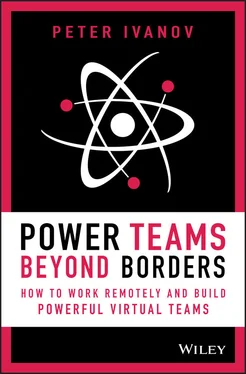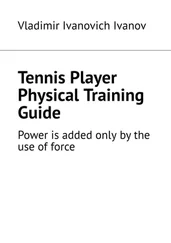This was a six‐week course during which time my client provided guidance through videos. Participants didn't pay for the course until they had successfully completed it and received their certification.
He had over 35,000 people sign up for the course. He also had a team of 20 professors who were providing feedback on the designs that the students were creating.
The aim was to have a completed school design by the end of the sixth week. But as soon as it reached the fifth week, he saw a significant drop in the number of students. Many people were learning for five weeks, but when it came to completing the course and paying for their certificate, they just weren't interested.
As a result he changed his approach and asked for the fees up‐front. But this meant only 2,000 people signed up to his MOOC. By the time we had an online coaching workshop together, he was in trouble.
We decided that he should go back to the approach of taking payment on completion of the course, but that he'd focus on significantly increasing conversions to the final week and therefore payment. How did we do this?
To begin with, we decided to split this massive group of 35,000 people into groups of five. It sounds like a mammoth task, but we got the students to self‐organise and choose their groups based on factors like proximity, time zone and so on.
Once people had split into a group of five, they were invited to an online session where they each presented their lifeline and then discovered their strengths using the five questions I outlined above. Based on what they found out through these exercises, they then split the work from the project between the five of them.
Once the critical week, week five, arrived, they were invested in their team and they couldn't let their teammates down. This led to his conversions increasing to 20,000 completions of the course and payments.
For my client, this resulted in a $480,000 boost to his revenues, all just by using these two simple techniques I've just talked you through.
Why Personality in Focus and the Strengths Matrix is a Magic Combination
The reason why these two techniques can have such a powerful effect on the success of virtual, and indeed any, teams is that they give every team a vision. In the corporate world there is often a corporate vision that is cascaded down to teams. The problem with cascading a vision down, is that there will often be elements of the corporate vision that some people find it hard to identify with.
My approach works the opposite way. As a team leader you can choose one of these two options. The first is the Martin Luther King ‘I have a dream’ approach, where you explain the team vision in such a vivid way that everyone follows you. The second is to let everyone in your team work out the vision.
I always recommend that virtual teams choose the second option, even if you are Martin Luther King. Why? Because people will identify with every part of the vision if it's something they contribute to themselves.
How to Create a Team Vision
This may not be the precise definition of a vision, but it will help your team to focus and allow them all to use their superpowers to best effect.
Begin by breaking your team into five groups (depending on how many people you have) and ask the first group to consider the purpose of your team. They need to ask the question, ‘Why do we do what we do?’
Start with Why by Simon Sinek is an excellent book that explores this concept and looks at what makes ‘Why?’ such a powerful question. Understanding your ‘Why’ as a team will give you a lot of energy to tackle your first problem together.
Ask the second group to explore who your target audience is. Who are you trying to reach? What channels are you selling your products through? How do you look after your customers?
The third group should work on identifying the unique selling proposition or unique value proposition. They should answer the question of ‘What's unique about our team?’ and from there identify your value proposition.
The fourth group should consider what your customers get from you that they can't get from anywhere else.
And the fifth group should identify the key resources within the team, and also explain what your team members can get within the team that they can't get anywhere else.
Firstly, allow everyone to contribute individually to the question assigned to their group. In doing so, you give the more introverted team members a chance to contribute effectively and allow everyone to recognise their own word or contribution in the vision statement.
Give each group some time to work on their question together as well and then pass their suggestions on to the next group and so on, until every group, and every person, has considered all five questions. If you're all in the same location you might use five different flipcharts to collect everyone's ideas, but if you're doing this virtually you can use virtual whiteboards. The contributions don't need to be big. They just need to be a few key words or a short sentence for each area.
The key is to ensure that every individual within each of those groups has an opportunity to contribute. You need to make sure that the introverts are encouraged to speak up and aren't spoken over by the extroverts.
Once every group has provided their thoughts on all five of these questions, ask each group to formulate a sentence using all the key words that feature across the whiteboards. This sentence needs to be neither too short nor too long, but it needs to encompass the team's purpose and its essence. Encourage everyone to discuss their ideas as a big group once the smaller groups have finished their discussions.
When you combine what all five groups have come up with, you'll have a team vision. It might need some fine tuning, but the most important thing is that everyone will know they've made a contribution and everyone in your team will identify with the vision.
Once you've reached this stage, you can begin breaking that vision into strategic goals, which is what I'll talk about in the next chapter.
Конец ознакомительного фрагмента.
Текст предоставлен ООО «ЛитРес».
Прочитайте эту книгу целиком, на ЛитРес.
Безопасно оплатить книгу можно банковской картой Visa, MasterCard, Maestro, со счета мобильного телефона, с платежного терминала, в салоне МТС или Связной, через PayPal, WebMoney, Яндекс.Деньги, QIWI Кошелек, бонусными картами или другим удобным Вам способом.












